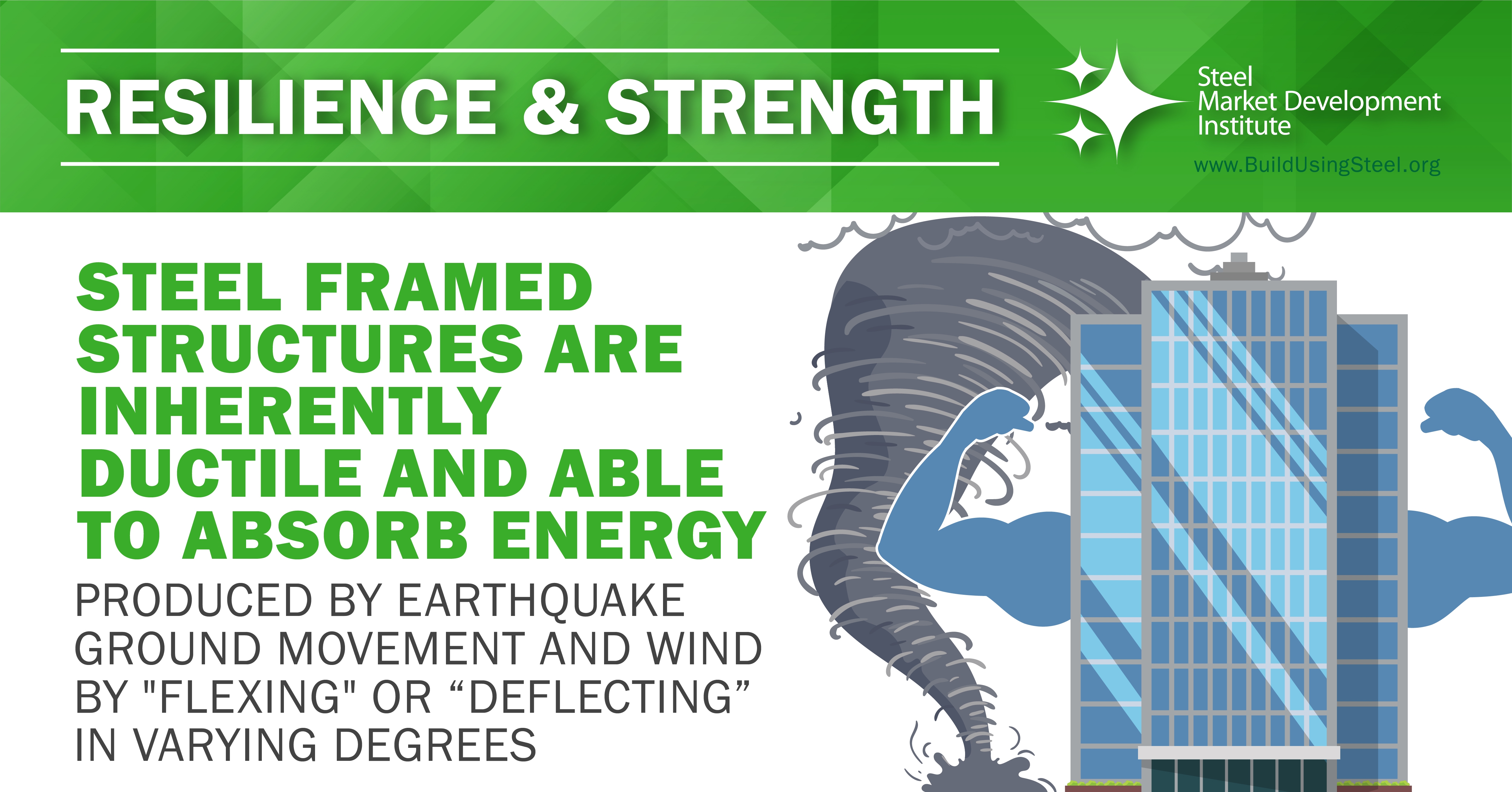Resilient Building Design
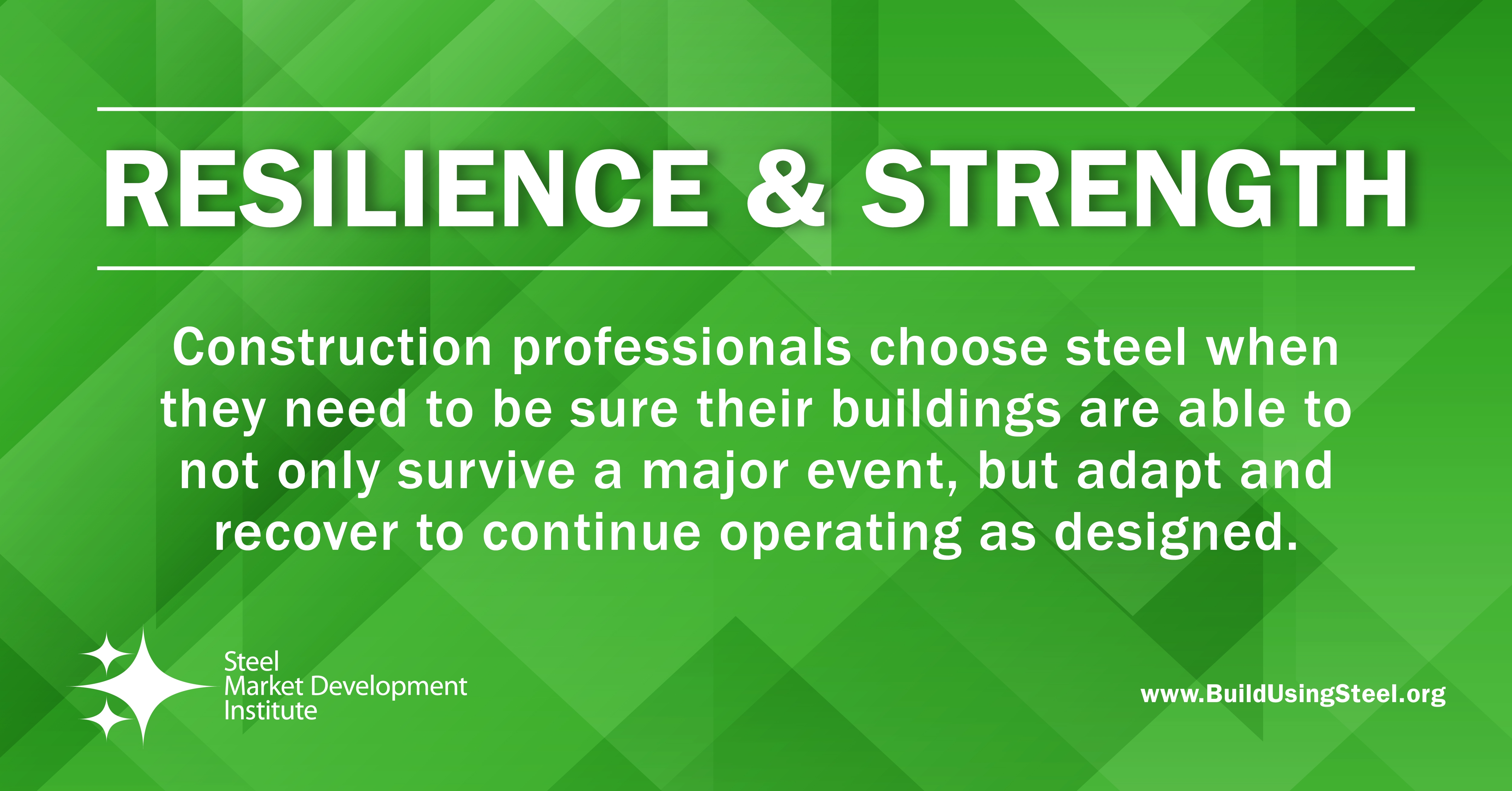
Steel-intensive resilient buildings can play a major role in ensuring communities are prepared, and resilience is increasingly being considered as an important design requirement by owners and builders. Resilient building design goes beyond the minimum code requirements and considers the financial and societal costs of operational disruption in the wake of disasters.
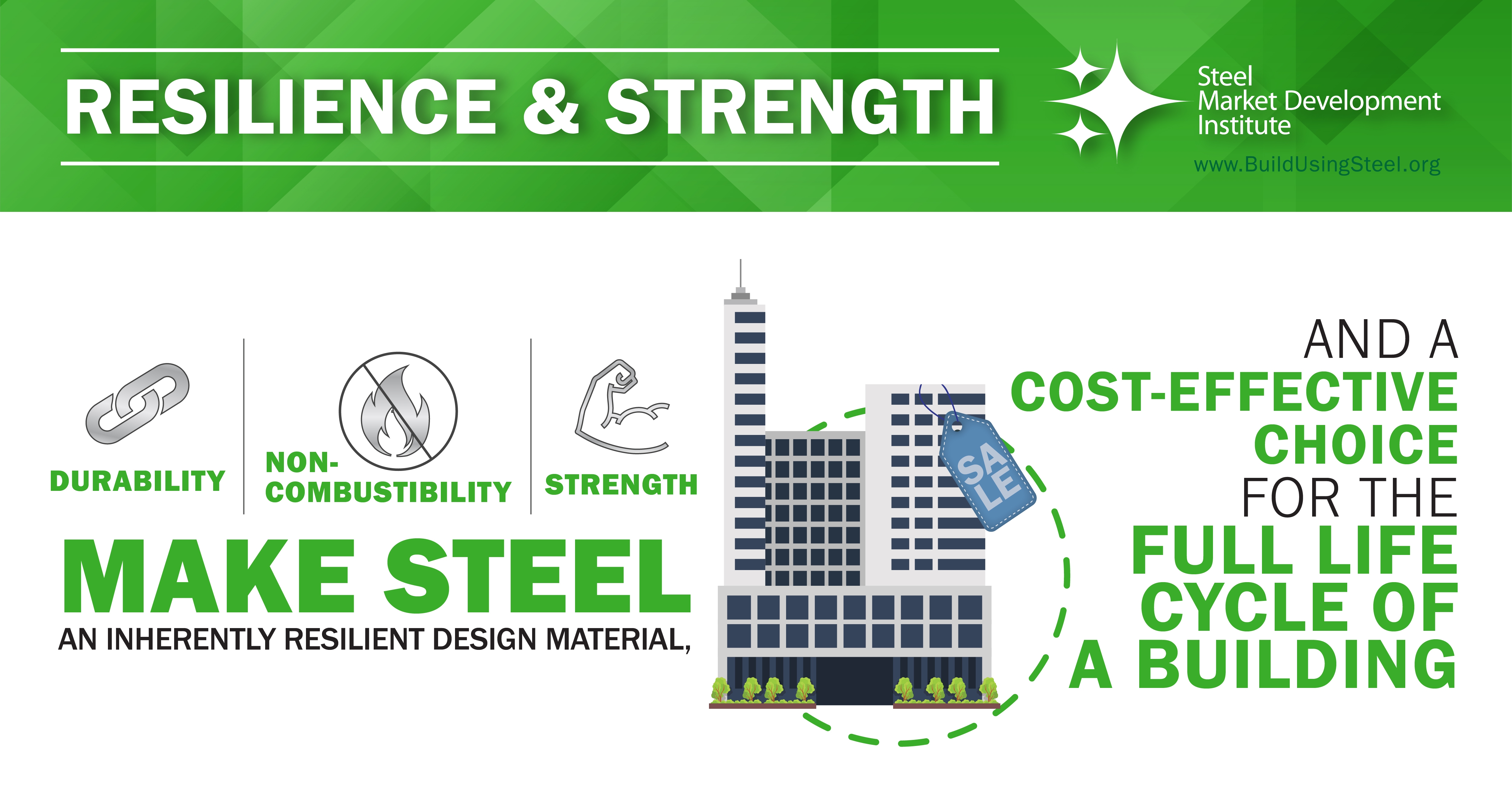
Steel-intensive structures perform predictably when subjected to the structural loads and movements imposed by natural hazards and man-made events due to steel’s homogeneous and isotropic properties. Design professionals can rely on steel’s durability and adaptability when choosing a structural material for projects in high-seismic and high-wind areas.
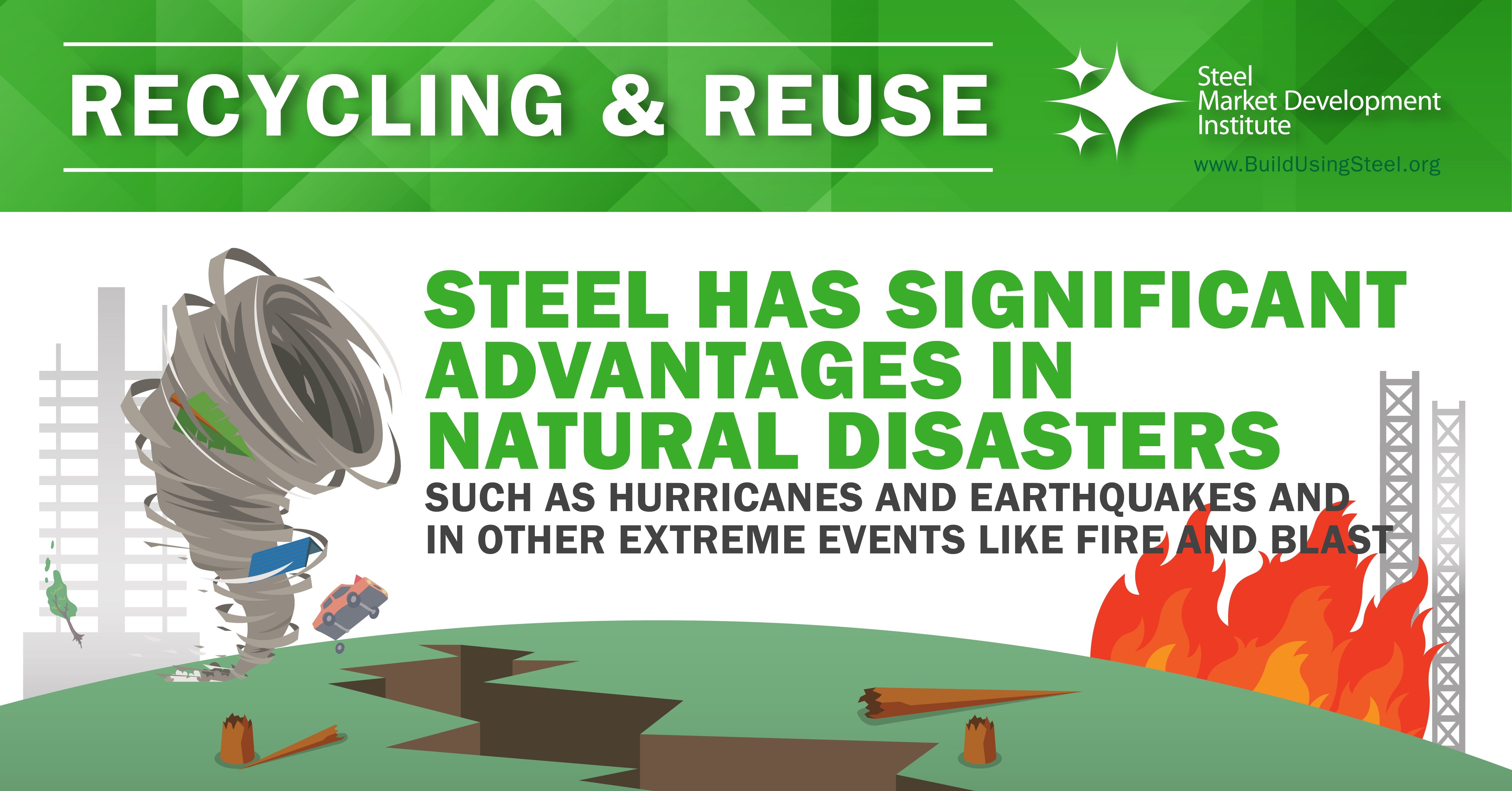
Once a steel member has been formed, it will remain dimensionally stable with virtually no change to the thickness, width or other dimensions, as well as strength and stiffness. Likewise, fasteners, connectors and welds used to join steel framing members retain their strength and reliability over time.
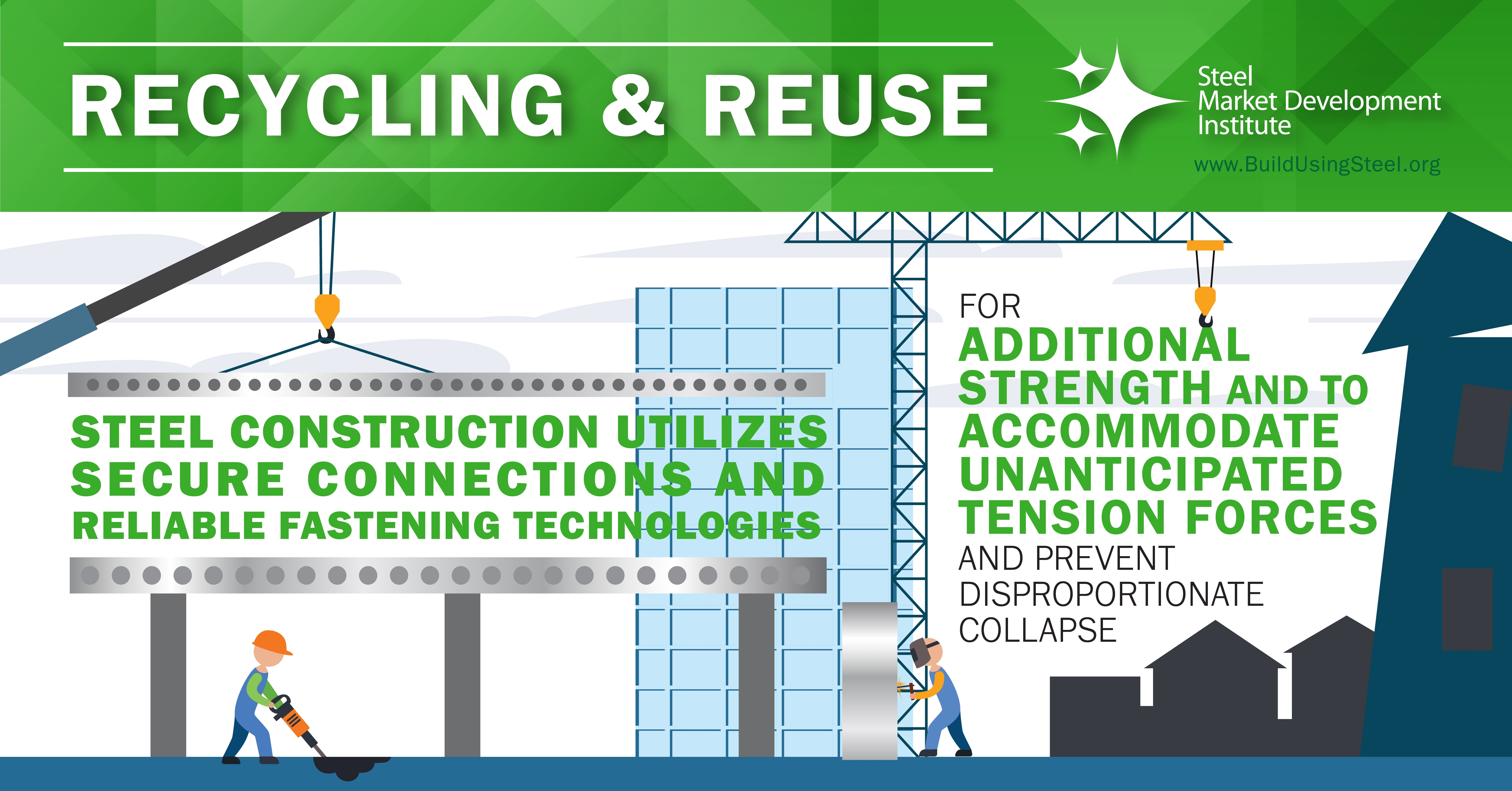
Steel’s durability, strength and ductility help steel-intensive buildings withstand catastrophic events and allow for continuous functionality following disasters like earthquakes or hurricanes.
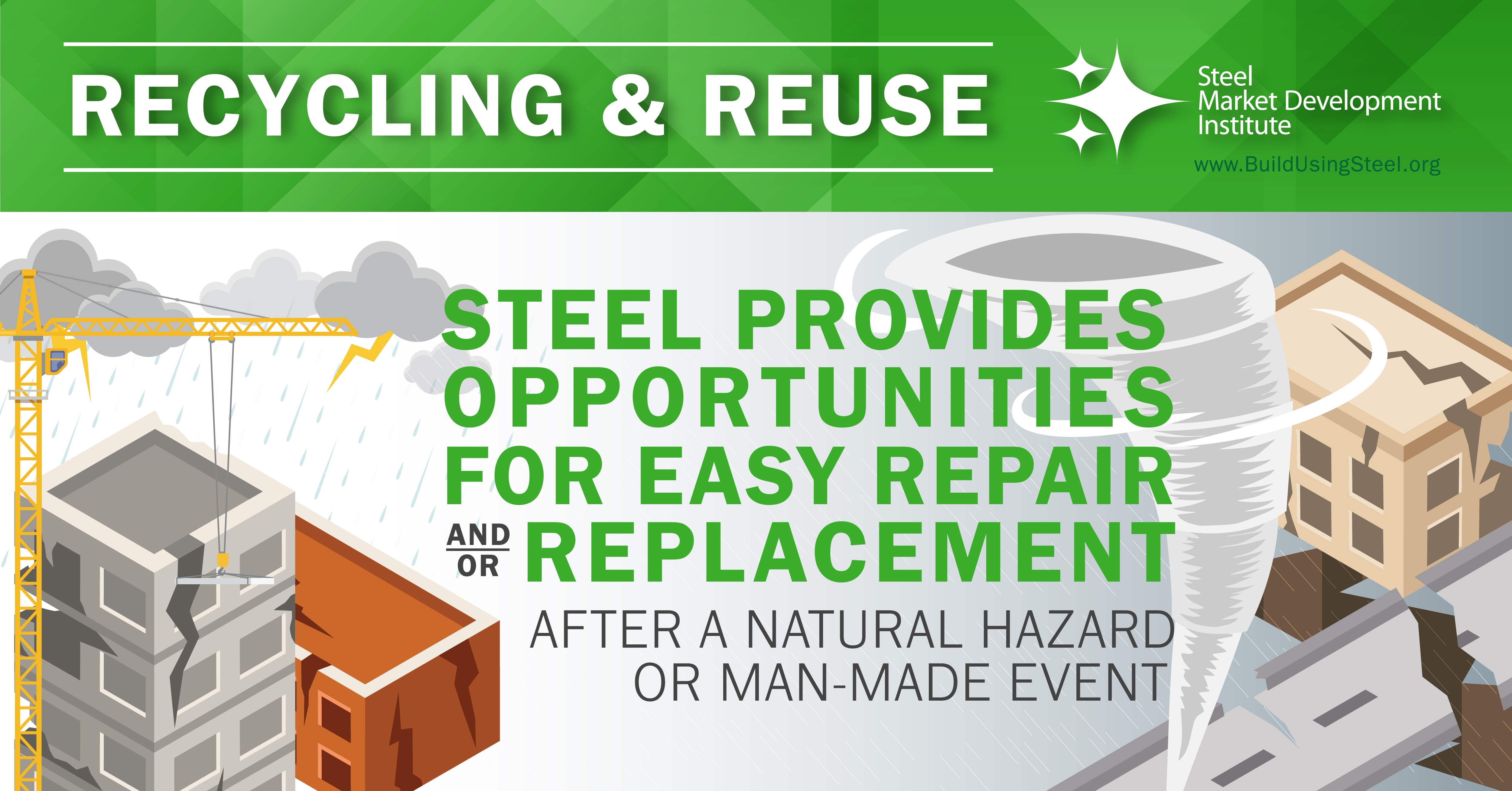
In addition, steel is noncombustible. Fires can follow disasters and since steel products will not contribute to the spread (e.g. fuel load) of a fire, steel-intensive buildings are less likely to sustain or promote devastating fire-related damage.
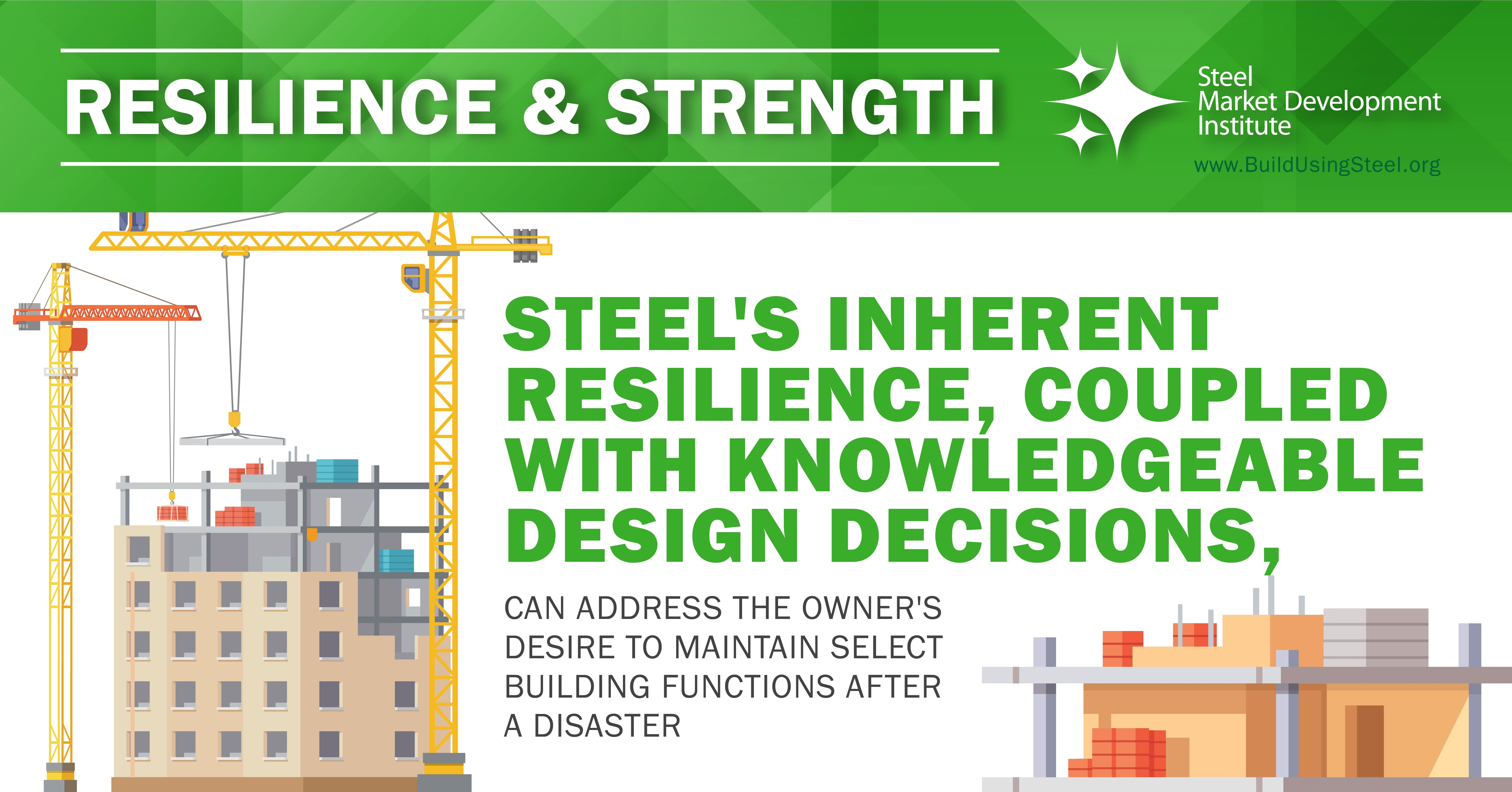
Steel also provides opportunities for easy repair and/or replacement after a natural hazard or man-made event. Steel's inherent flexibility as a material, coupled with well-informed design decisions addressing resilient requirements, can address the owner's desire to maintain select building functions or adapt to changing requirements after a disaster.
